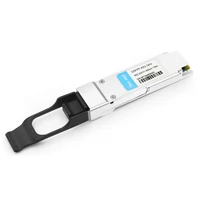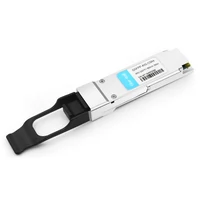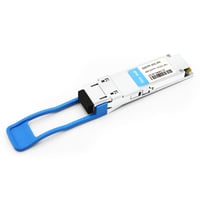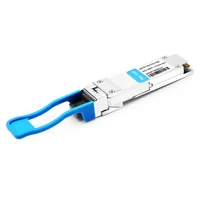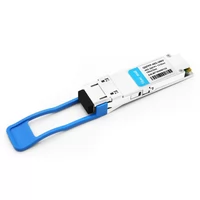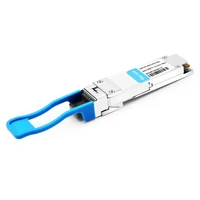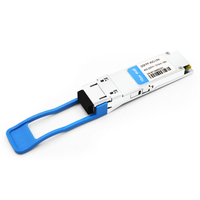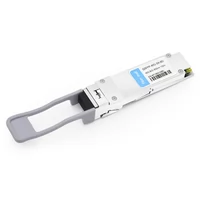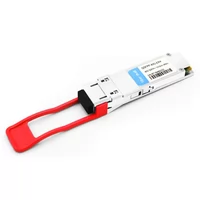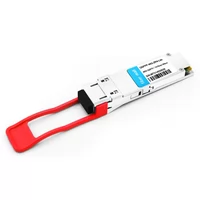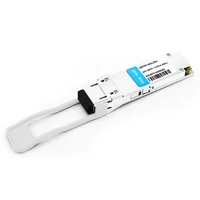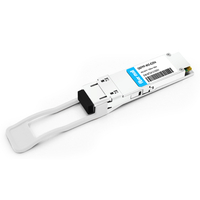As the networking technology landscape changes, optical transceiver modules are key in enabling high-speed data transmission through different infrastructures. This guide examines Juniper Optical Transceiver Modules to provide a complete understanding of their technical specifications, functions and uses within networking environments. By investigating the details of these components, readers will learn how they improve connectivity and performance. Additionally, it may be helpful to understand network interface cards’ roles with these transceivers which can shed more light on their importance. Suppose you are an IT professional wanting to optimize your network or a novice trying to comprehend the basics of optical connectivity. In that case, this all-inclusive guide will give you knowledge that enables sound decisions concerning Juniper’s optical solutions.
Table of Contents
ToggleWhat is a Juniper Compatible Transceiver?
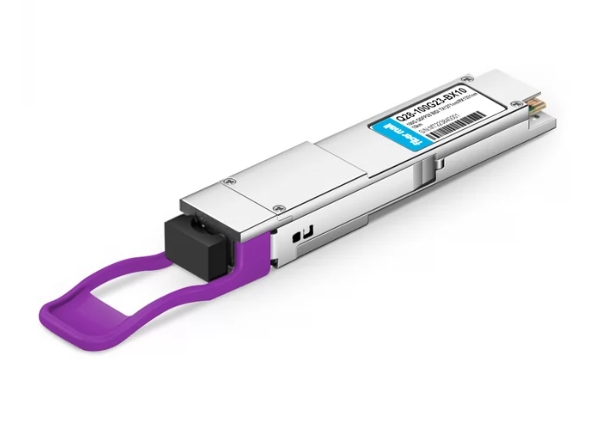
What Makes a Transceiver Compatible?
Interoperability of a transceiver is primarily dependent on how easily it can interface with networking equipment and protocols. The following are some important factors that contribute to compatibility:
- Form Factor: Transceivers come in different form factors like SFP, SFP+, or QSFP which have to fit into the slots provided by the Juniper devices.
- Wavelength and Distance: For optimal signal quality and reach, operational wavelength as well as maximum distance supported by the transceiver should match with those required for optics used in network deployment.
- Data Rate: A 10Gbps transceiver for example must be connected to another device capable of supporting same data rates (in this case also 10Gbps) so as to achieve fast transmission.
- Protocol Support: Communication among devices can only happen if they all use similar networking protocols such as Ethernet SONET Fibre Channel etcetera
- Firmware And Software Compatibility: It is critical that firmware version on transceivers are consistent with latest updates from Juniper hardware because it determines how well they will work together
If these considerations are made, then a chosen pair of Juniper-compatible switches will function properly within their respective environments according to their specifications.
The Benefits of Using Juniper Networks-Compatible Modules
There are a number of benefits of using modules that are compatible with Juniper Networks which improve network performance as well as operational efficiency. To start with, these modules undergo rigorous testing for compatibility and this ensures that they work together perfectly with the hardware from Juniper. Consequently, this guarantees maximum productivity while minimizing downtime and making troubleshooting easier.
In addition, due to high-quality standards compliance among them, transceivers that are compatible with Juniper have more reliability and longevity than others. These optical transceivers also provide excellent performance coupled with long life span thus reducing frequent replacements hence lowering maintenance costs in general.
Last but not least is the fact that such devices usually come equipped with advanced features like better diagnostics tools or monitoring systems which give vital information about how well the network is performing or where there might be problems so that it can be fixed before things get worse thereby improving overall health of the system through proactive management by administrators who manage networks based on their insights into what’s going on within those networks at any given time – this means choosing modules from Juniper Networks guarantees strong future-proof environments for organizations’ IT infrastructure development plans.
Are Juniper Compatible Transceivers Quality Tested?
Juniper-compatible transceivers undergo stringent quality tests to guarantee their reliability and performance. Major manufacturers like those known for making compatible modules also adopt several QA measures that entail wide-ranging tests for interoperability with Juniper systems. Such testing usually looks at critical factors such as signal integrity, thermal behavior and conformance to the industry standards. By going through this exhaustive evaluation process, these products meet all required specifications by Juniper thus minimizing any possible compatibility or performance issues when they are used in a live network environment. This gives confidence to network administrators about the quality of these devices which can be relied upon to function properly within his/her system
How Does a Juniper Optical Transceiver Module Work?
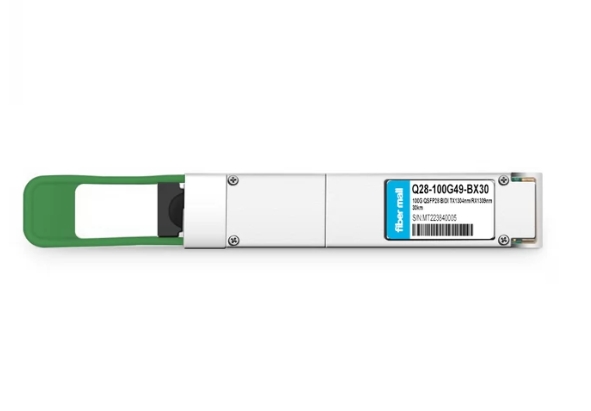
Types of Optical Transceivers: SMF and MMF
Networking relies heavily on optical transceivers that make use of different fibers to send data. There are two types of these transceivers: single mode fiber (SMF) and multi-mode fiber (MMF). SMF transceivers work by transmitting signals over long distances through a single glass fiber which provides high bandwidth with low attenuation. This is why they are used in long-range applications like telecommunication systems or large enterprise networks where connectivity needs to cover many miles. On the other hand, MMF transceivers allow shorter-distance signal transmission using several light paths within multiple strands of fibers. Therefore, this type is mostly found in data centers or local area networks (LANs) where distances are small but data rates may be very high. It’s important to understand what differentiates SMFs from MMFs so as to optimize network architecture according to specific application requirements.
Understanding 1310nm Wavelength
Optical transceivers frequently operate at a wavelength of 1310 nm in single-mode fiber applications. This particular frequency provides a balance between operational efficiency and price, meaning that it has low attenuation and lower chromatic dispersion over long distances (up to about 40 kilometers for some uses). It’s often used in metropolitan area networks (MANs) as well as data center interconnects. By using the 1310 nm wavelength, signals can be transmitted efficiently with minimal influence from external forces so that reliable data transfer occurs across different types of networks. Wavelength selection impacts the speed of light through fibers, which should, therefore, be taken into consideration when designing networks to achieve optimal performance.
LC Connectors: What Are They and Why Are They Used?
Designed for telecommunications and data networking applications, LC connectors — short for Lucent Connectors — are small yet high-density fiber optic connectors. Their compactness allows them to be used in high numbers within confined spaces, which makes them particularly suitable for data centers as well as telecommunication rooms. In addition to this, Juniper Networks® transceivers are often TAA compliant due to their wide applicability. A one-piece design coupled with a ceramic ferrule guarantees accurate alignment of the connector thereby enhancing its ability to transmit signals more efficiently while reducing insertion loss and improving return loss than larger connectors. Being compatible with both Single Mode Fiber (SMF) and Multi-Mode Fiber (MMF) applications gives it versatility across different types of networks where Juniper Networks® transceivers can be used. Understanding the characteristics and benefits associated with LC connectors is key when designing efficient network structures that take up minimal space.
What Are the Common Applications of 40G Optical Transceivers?
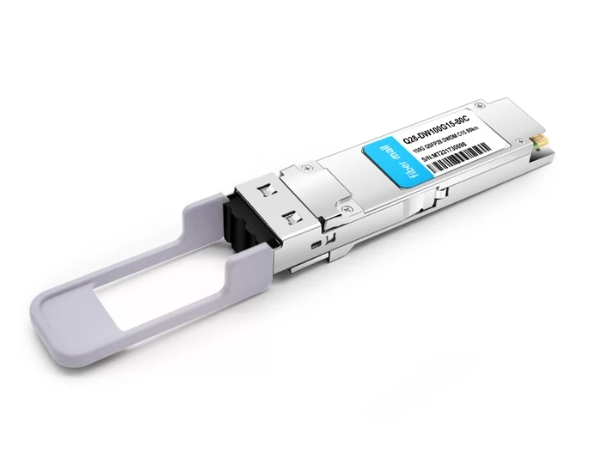
Data Center Implementations
Data centers utilize 40G optical transceivers mainly for fast data transfer over short to medium distances. These transceivers connect servers, storage systems, and switches, among others, which are used in applications that require high bandwidth, like cloud computing and big data analytics. They also increase network scalability as well as flexibility by making it easy to quickly deploy new services or upgrade existing ones within the current infrastructure. In order to keep up with the growing demand for higher data rates, 40G optical transceivers have become essential in ensuring optimal performance of modern data centers such as efficiency.
Optical Transceivers in Ethernet Networks
Ethernet networks use optical transceivers to send data through fiber optic cables at high speeds. This capability is enhanced by modules such as the 40GBASE-ER4 QSFP and 40GBASE-LR4 QSFP. These devices are used to connect switches, routers, and other network equipment that need to move large amounts of data efficiently over long or short distances. In Ethernet networks, common types of optical transceivers include SFP, SFP+, and QSFP+, which differ in data rates and operational ranges. For even higher data rates, 40GBASE-LR4 QSFP and 40GBASE-ER4 QSFP modules are also widely used due to their low latency/high bandwidth characteristics that are critical for video streaming, online gaming, and enterprise-level data processing, among others. Ultimately, therefore, within an Ethernet network system where there is integration of Optical Transceivers, it leads to improved performance reliability communication capacity seamlessness during exchanges between different parts of the Network.
Switch Environment: How Transceivers Integrate
Transceivers are used as the interface between a switch and network medium in which you can either use fibre optic or copper cabling. Every transceiver is made to fit into a particular port type on the switch, such as SFP or QSFP, and this allows for hot swapping of modules without interrupting the operation of the network. With this modular method, it becomes easier for administrators to change their configurations in order to meet changing bandwidth requirements because it makes scaling up networks easy. Moreover, different protocols and speeds are supported by transceivers thus ensuring compatibility with various devices and topologies within a given computer network environment. Therefore, effective integration of these components within switches improves performance and reduces bottlenecks while supporting dynamic enterprise needs.
How to Choose the Right 40gbase-lr4 or 40gbase-er4 Module?
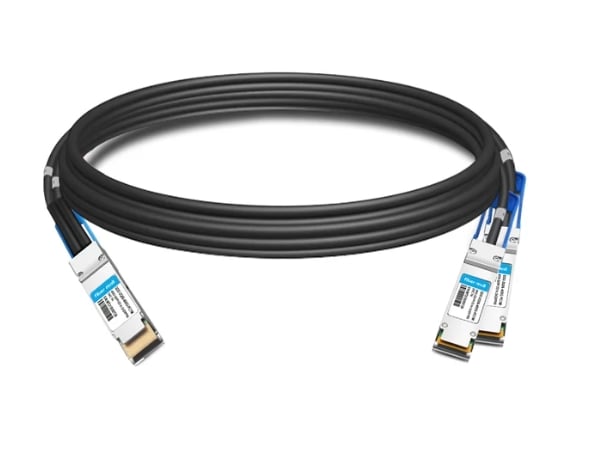
Comparing 40km and 10km Ranges
The most critical distinction between the 40GBASE-LR4 and 40GBASE-ER4 modules is their optical ranges and application suitability. Specifically, the 40GBASE-LR4 has a long-range specification that allows it to transmit data in single-mode fiber (SMF) up to 40 kilometers over a wavelength of 1310 nm. This makes it ideal for moderate-distance data center interconnects and metropolitan area networks (MANs). On the other hand, the 40GBASE-ER4 module was designed for extended range applications. It can also transmit data over distances as long as forty kilometers but at a longer wavelength (1550nm). The use of this longer wavelength reduces attenuation thereby allowing effective communications without repeaters across much greater lengths than LR4 modules would be able to do so, making ER4 preferable for maximum reach applications like large campus inter-building links or geographical spans. Ultimately, specific distance requirements, as well as network infrastructure and projected data throughput, will determine which one you should go with.
Cost-Effectiveness of Different Models
In assessing the cost efficiency of 40GBASE-LR4 and 40GBASE-ER4 modules, one must take into account not only the upfront price but also operational costs over time for both solutions. As indicated by a number of prominent industry websites, LR4 modules are generally less expensive than their ER4 counterparts because they have lower manufacturing and material expenses. However, module selection could also influence TCO (total cost of ownership). You can keep expenses down while meeting performance requirements by using compatible QSFP transceivers. Although it is usually more costly to buy initially, the 40GBASE-ER4 has a greater range capability which eliminates the need for additional equipment such as repeaters over long distances. So, if you want to optimize long-distance communication, consider choosing a 40GBASE-ER4 QSFP module instead. When connecting different geographic locations or making larger deployments this tradeoff will yield substantial savings. Therefore your specific deployment needs projected growth and network architecture should dictate what choice is best from a cost-effectiveness standpoint
Reliability and Performance Metrics
When evaluating the effectiveness of 40G optical modules such as 40GBASE-LR4 and 40GBASE-ER4, reliability and performance metrics are critical. Among these benchmarks are the 40GBASE-LR4 QSFP and 40GBASE-ER4 QSFP modules which are exemplary. According to leading industry sources, Mean Time Between Failures (MTBF), packet loss rates, and latency measurements are important metrics. Normally, high MTBF characterizes the LR4 modules, indicating a robust design that results in lower downtime maintenance costs. On the other hand, although ER4 modules also show high reliability, they can be more sensitive to environmental conditions like humidity or temperature, which may affect long-distance signal integrity. Further testing for standard compliance is often used as a measure of performance e.g., IEEE 802.3ba testing ensures both module types meet speed efficiency industry benchmarks. These stringent tests subject TAA-compliant transceivers to compatibility requirements; thus, selection between them should involve an all-around understanding of deployment environment performance expectations so as to optimize network reliability where compatible QSFP transceivers can have a huge impact on this assessment.
What Are the Features of QFX-QSFP-40G-SR4 Compatible Modules?
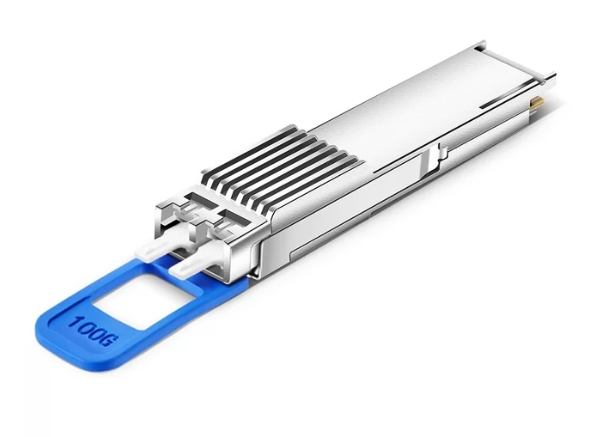
Advantages in High-Density Computing Network
The QFX-QSFP-40G-SR4 compatible modules offer the best bandwidth and space efficiency in high-density computing networks. These modules are built to ensure a high data rate of 40 Gbps per channel which is important for fast data transfer between connected devices in applications that require a lot of data. Moreover, their small size decreases the amount of space needed in data centers, thereby allowing better air movement and cooling. Also, routing many 10G connections through one single 40G port minimizes cable mess while maximizing resource use. In addition, these modules work with multimode optical fiber over shorter distances, making them suitable for intra-rack or inter-rack links. Generally speaking, using QFX-QSFP-40G-SR4 compatible modules improves network efficiency, reduces latency, and enhances performance in dense computing environments.
Understanding the IEEE 802.3ba Standard
A critical specification for defining 40 Gigabit Ethernet (40GbE) and 100 Gigabit Ethernet (100 GbE) technologies in high-speed networking is the IEEE 802.3ba standard. This standard, which was introduced in June 2010, provides a framework for operation at higher bandwidths that allows data to be transmitted over multimode and single-mode optical fibers among other media. It specifies protocols for physical layer devices to ensure interoperability between equipment from different manufacturers thus ensuring network integrity is maintained. Moreover, it sets out guidelines on transmission distances as well as types of connectors used, thereby enabling networking components to work together seamlessly under various deployment scenarios. In general terms, IEEE 802.3ba significantly improves network performance, especially where high throughput and low latency are required, such as data centers or cloud computing platforms.
How Pluggable Transceivers Enhance Flexibility
Transceivers that can be plugged in bring a lot of flexibility to networks because they make it easy to change and adapt them according to different connection requirements, eliminating the need for total hardware replacement. These modules have multiple data rates, formats, and wavelengths, which allow them to switch between different types of network speeds as well as topologies seamlessly when changing demand evolves. Furthermore, their ability to be swapped while still powered on enables network administrators to reduce downtime by modifying or upgrading transceivers in live environments, thus ensuring continuous service availability. This kind of flexibility maximizes investment in current infrastructure and supports various applications ranging from data centers all the way through enterprise networks making room for more dynamic approaches towards design and management within these systems.
Reference Sources
Frequently Asked Questions (FAQs)
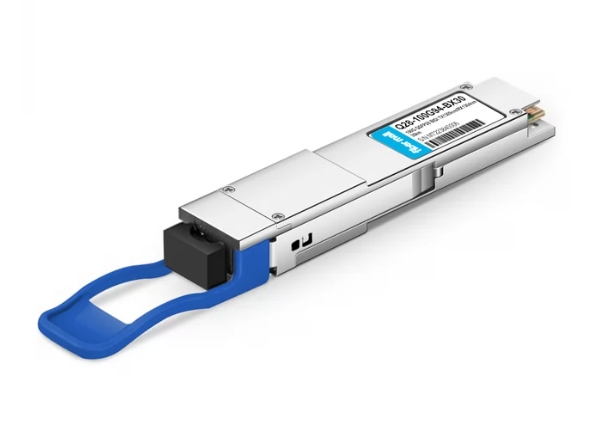
Q: Juniper Networks’ optical transceiver module – what is it and how does it work?
A: In Juniper Networks, an optical transceiver module operates as a two-way device that transforms electrical signals into optical signals and vice versa. This type of module enables high-speed data transfer between network devices over fiber optic cables.
Q: Which types of transceivers can be found in Juniper Networks?
A: SFP, QSFP, and qsfp juniper compatible modules are examples of the various types of transceivers that are available at Juniper Networks. These modules have different capacities with some being 40g transceivers while others are compatible 40gbase-sr4 qsfp models.
Q: How do I determine the best fiber optic transceiver for my requirements?
A: Your choice of the right fiber optic transceiver should reflect your network demands, such as distance, data rate, and whether it works well with other hardware. You might want to consider if you need an sfp module or a qsfp juniper compatible unit but more importantly, ensure compliance with your existing infrastructure.
Q: Can I use Juniper Networks Transceivers from Other Manufacturers?
A: Indeed! Since they conform to MSA standards, which allow interoperability among different vendors’ devices, you can freely use them across all platforms without worrying about any compatibility issues arising later on during the installation process, especially when dealing with sfp or qsfp units.
Q: What makes Duplex LC Connector important in JUNIPER Transceivers?
A: The duplex LC connector plays a crucial role in JUNIPER transceivers because it provides two-way communication through one fiber optic cable. This feature becomes vital for OS2 applications where deployment simplicity along multiple links is desired within SFP modules. It also applies to OS2 fiber optic cables since it is widely accepted as a standard connective interface within such systems.
Q: Are digital diagnostics supported by Juniper optical transceivers?
A: Many Juniper optical transceivers do support digital diagnostics. This allows for real-time monitoring of important parameters like power consumption, temperature, and signal quality, which is essential to keep the network running efficiently.
Q: What are some affordable ways to use Juniper transceivers to increase network capacity?
A: To expand your network cost-effectively, you can utilize compatible 40g qsfp modules and compliant direct attach cables that provide higher performance at a lower price than traditional fiber optic solutions.
Q: Is TAA compliance present in Juniper Networks’ transceivers?
A: Yes, several Juniper Networks transceivers, such as jnp-qsfp-40g-lr4, have undergone quality testing for compatibility and are, therefore, TAA compliant. Hence, they can be used in government-regulated environments.
Q: What is the significance of custom cable assemblies in Juniper Networks deployments?
A: Custom cable assemblies play an important role in simplifying deployment and ensuring optimal performance within complex network environments. For instance, factory terminated twinax cable that connects directly to 40g transceivers.
Q: How do QSFP ports differ from standard SFP ports when it comes to handling network traffic?
A: Compared to standard SFPs, QSFPs can handle more parallel data streams at higher data rates making them suitable for high-bandwidth applications as well as efficient data center interconnects.
Related Products:
-
 Juniper QSFPP-40GBASE-SR4 Compatible 40G QSFP+ SR4 850nm 150m MTP/MPO MMF DDM Transceiver Module
$25.00
Juniper QSFPP-40GBASE-SR4 Compatible 40G QSFP+ SR4 850nm 150m MTP/MPO MMF DDM Transceiver Module
$25.00
-
 Juniper QFX-QSFP-40G-ESR4 Compatible 40G QSFP+ ESR4 850nm 400m MTP/MPO MMF DDM Transceiver Module
$30.00
Juniper QFX-QSFP-40G-ESR4 Compatible 40G QSFP+ ESR4 850nm 400m MTP/MPO MMF DDM Transceiver Module
$30.00
-
 Juniper JNP-QSFP-40GE-IR4 Compatible 40G QSFP+ IR4 1310nm (CWDM4) 2km LC SMF DDM Transceiver Module
$129.00
Juniper JNP-QSFP-40GE-IR4 Compatible 40G QSFP+ IR4 1310nm (CWDM4) 2km LC SMF DDM Transceiver Module
$129.00
-
 Juniper JNP-QSFP-4X10GE-IR Compatible 4X10Gbase QSFP+IR 1310nm 1km MTP/MPO SMF DDM Transceiver Module
$139.00
Juniper JNP-QSFP-4X10GE-IR Compatible 4X10Gbase QSFP+IR 1310nm 1km MTP/MPO SMF DDM Transceiver Module
$139.00
-
 Juniper JNP-QSFP-40G-LX4 Compatible 40G QSFP+ LX4 1310nm 150m/2km LC MMF/SMF DDM Transceiver Module
$149.00
Juniper JNP-QSFP-40G-LX4 Compatible 40G QSFP+ LX4 1310nm 150m/2km LC MMF/SMF DDM Transceiver Module
$149.00
-
 Juniper QSFPP-4X10GE-LR Compatible 40G QSFP+ 4X10GE-LR 1310nm 10km MTP/MPO SMF DDM Transceiver Module
$149.00
Juniper QSFPP-4X10GE-LR Compatible 40G QSFP+ 4X10GE-LR 1310nm 10km MTP/MPO SMF DDM Transceiver Module
$149.00
-
 Juniper SRX-QSFP-40G-LR4 Compatible 40G QSFP+ LR4 1310nm (CWDM4) 10km LC SMF DDM Transceiver Module
$149.00
Juniper SRX-QSFP-40G-LR4 Compatible 40G QSFP+ LR4 1310nm (CWDM4) 10km LC SMF DDM Transceiver Module
$149.00
-
 Juniper JNP-QSFPP-40G-BXSR Compatible 40G QSFP+ SR Bi-Directional 850nm/900nm 100m/150m Duplex LC MMF Transceiver Module
$249.00
Juniper JNP-QSFPP-40G-BXSR Compatible 40G QSFP+ SR Bi-Directional 850nm/900nm 100m/150m Duplex LC MMF Transceiver Module
$249.00
-
 Juniper JNP-QSFP-40GE-ER4 Compatible 40G QSFP+ ER4 1310nm (CWDM4) 40km LC SMF DDM Transceiver Module
$449.00
Juniper JNP-QSFP-40GE-ER4 Compatible 40G QSFP+ ER4 1310nm (CWDM4) 40km LC SMF DDM Transceiver Module
$449.00
-
 Juniper Compatible 40G QSFP+ ZR4 Lite CWDM4 60km LC SMF DDM Optical Transceiver Module
$599.00
Juniper Compatible 40G QSFP+ ZR4 Lite CWDM4 60km LC SMF DDM Optical Transceiver Module
$599.00
-
 Juniper Compatible 40G QSFP+ ZR4 LWDM4 80km LC SMF DDM Optical Transceiver Module
$1200.00
Juniper Compatible 40G QSFP+ ZR4 LWDM4 80km LC SMF DDM Optical Transceiver Module
$1200.00
-
 Juniper Compatible 40G QSFP+ EZR4 DWDM4 100km LC SMF DDM Optical Transceiver Module
$1600.00
Juniper Compatible 40G QSFP+ EZR4 DWDM4 100km LC SMF DDM Optical Transceiver Module
$1600.00

